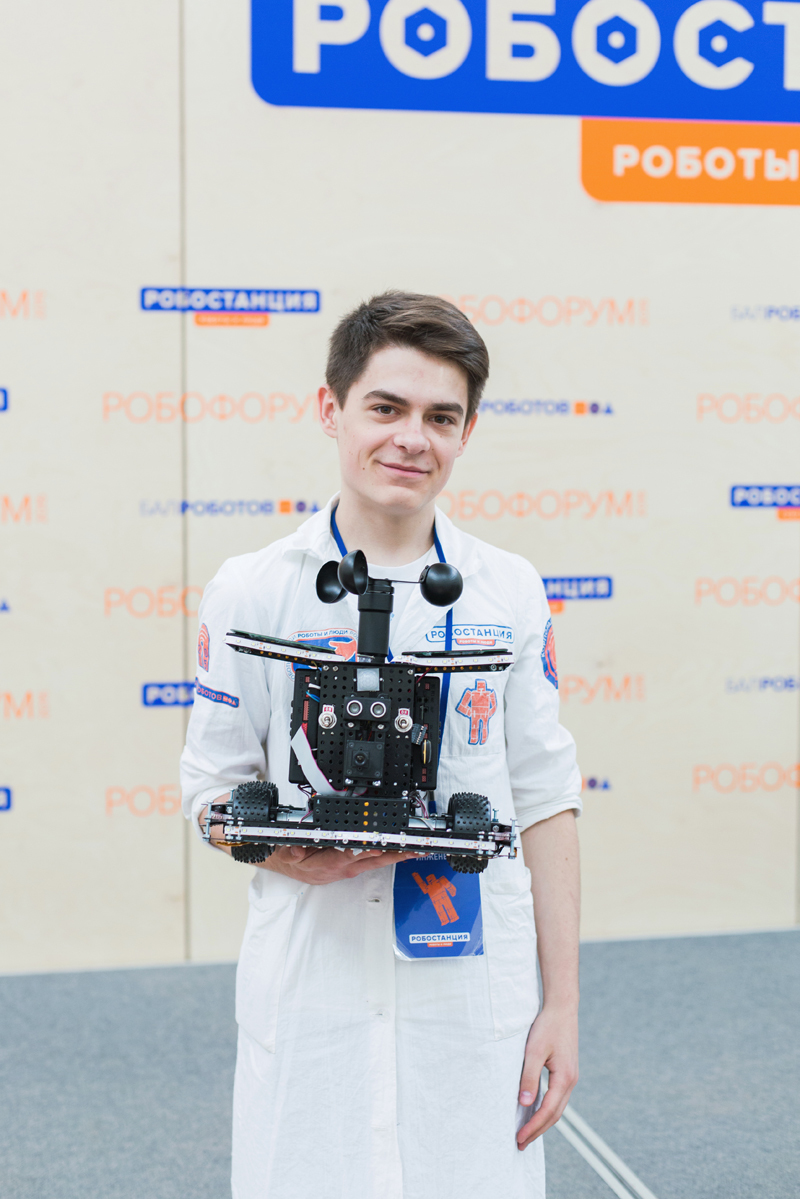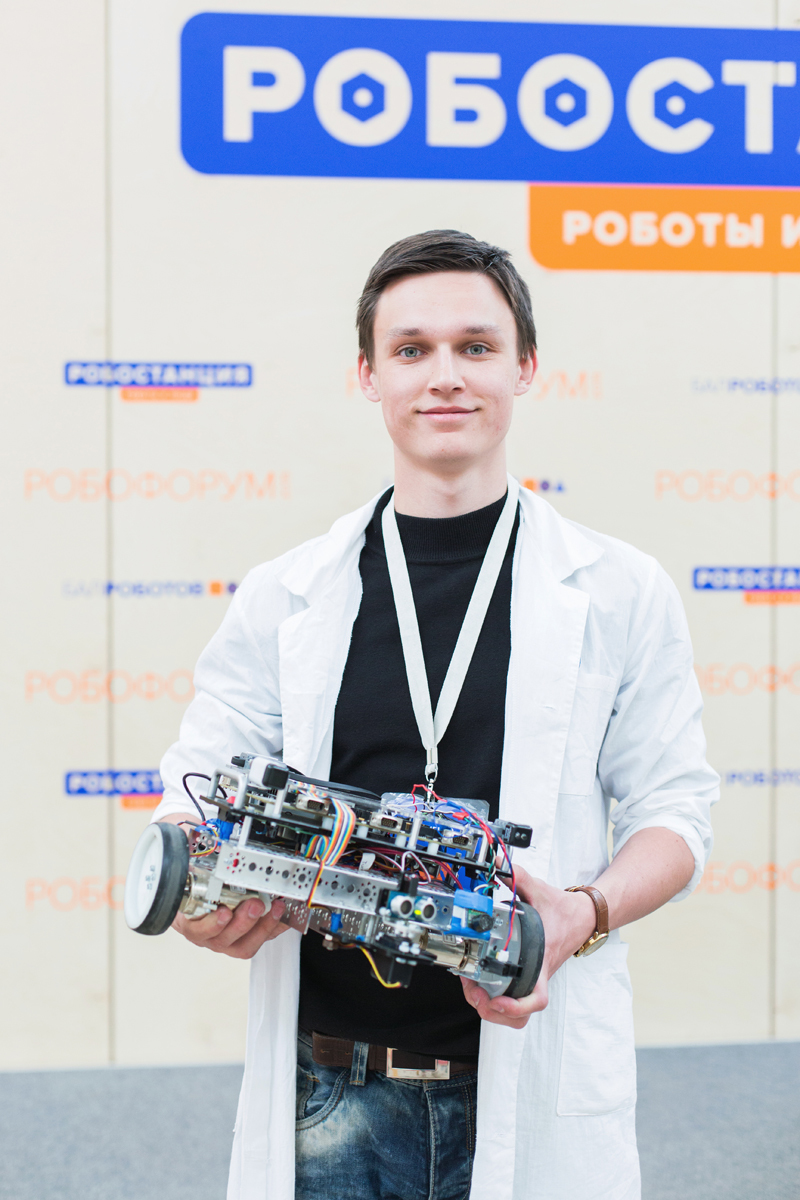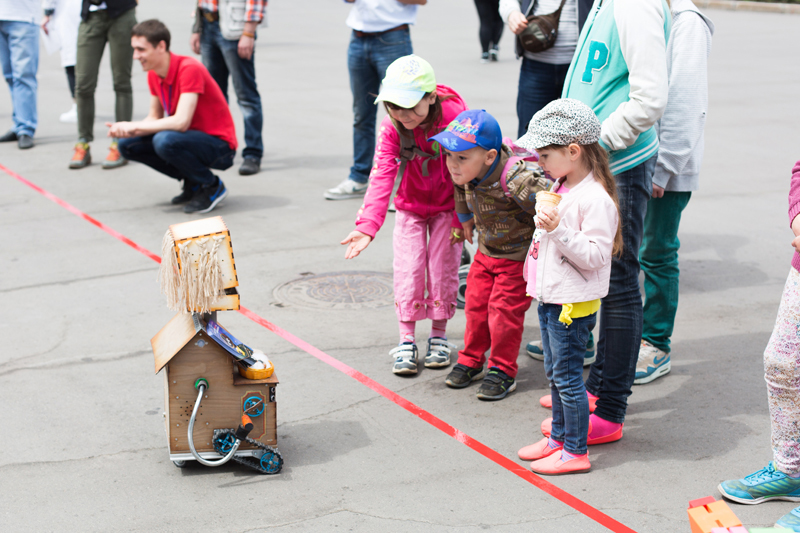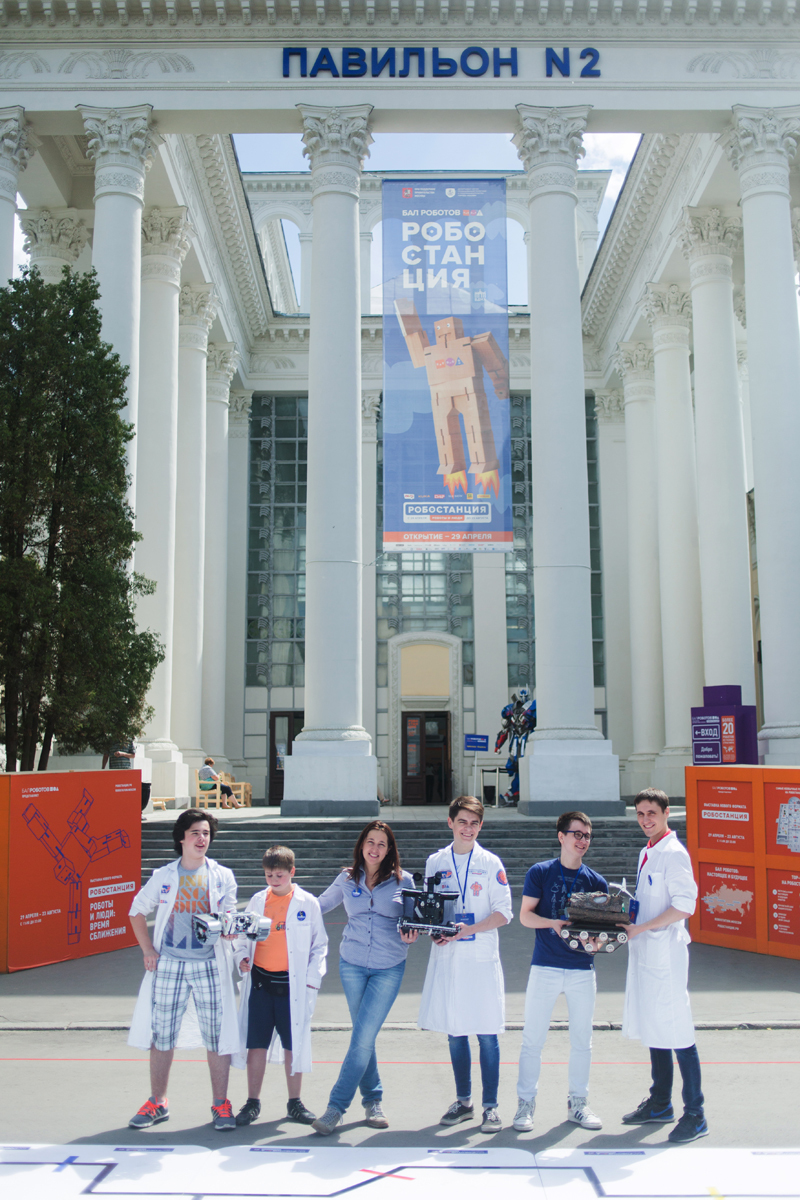The qualification stage for ecobots at Rostanzia has ended

Last Monday, ecobot test runs took place at Robostantsky . We called to take part all DIY masters and even gave details and grants for the creation of robots. Who came, that fellow!
Robots had to pass an obstacle course and complete a number of tasks on it. The judge evaluated each of the special questionnaire:
')
JURY MEMBER QUESTIONNAIRE
APPEARANCE ECOLOGY 1 2 3 4 5
TECHNICAL SPECIFICATIONS:
AUTOMATIC MOVEMENT (yes / no)
SELF ROUTE MOTION ROUTE (yes / no)
OBSTACLE SENSORS (yes / no)
SOUND EQUIPMENT (yes / no)
AVAILABILITY OF GAS ANALYZER (yes / no)
AVAILABILITY CAMERA (yes / no)
AVAILABILITY OF TEMPERATURE DETERMINATION SENSOR (yes / no)
PRESENCE OF PRESSURE SENSOR (yes / no)
Fulfillment of tasks:
TRACK PASSAGE 1 2 3 4 5
AIR TESTING COLLECTION (yes / no)
PRESSURE MEASUREMENT (yes / no)
MEASURING AIR TEMPERATURE (yes / no)
GAS MEASUREMENT (yes / no)
RESULT: _______________ points
* For each answer "yes" 1 point is awarded
TECHNICAL SPECIFICATIONS:
AUTOMATIC MOVEMENT (yes / no)
SELF ROUTE MOTION ROUTE (yes / no)
OBSTACLE SENSORS (yes / no)
SOUND EQUIPMENT (yes / no)
AVAILABILITY OF GAS ANALYZER (yes / no)
AVAILABILITY CAMERA (yes / no)
AVAILABILITY OF TEMPERATURE DETERMINATION SENSOR (yes / no)
PRESENCE OF PRESSURE SENSOR (yes / no)
Fulfillment of tasks:
TRACK PASSAGE 1 2 3 4 5
AIR TESTING COLLECTION (yes / no)
PRESSURE MEASUREMENT (yes / no)
MEASURING AIR TEMPERATURE (yes / no)
GAS MEASUREMENT (yes / no)
RESULT: _______________ points
* For each answer "yes" 1 point is awarded

In total, four teams took part: MAI, School 354, and two children's teams of the Rooster School. The winner was George Bondar from 354 schools (pictured above), he received a robot vacuum cleaner as a prize. But of course, the main thing is not victory, and not even participation, but the process of creating your own robot. By this we give the floor to the authors of our participants.

1. Name: Ecobot: Robopen
2. Creators: Vlasenko Oleg (Robostantia)
3. Parameters: Plastic case, to improve the driving performance.
The chassis is on caterpillars, which is high cross in difficult areas.
Travel range: about 3 km (figure obtained empirically)
Collect environmental data using various sensors.
4. Idea: Robopen appeared from the synthesis of two components: nature and technology. In order not to disturb the natural environment, while taking data from various sensors, we decided to make it inconspicuous and so that the robot would fit into the fauna.
5. Base: Robopen created on my configurations of the controller arduino nano. The choice was made on the basis of ease of programming and a wide choice of compatible components.
6. Sensors: Thermometer, barometer, anemometer, gas sensor, smoke sensor, air humidity sensor, motion sensor (sonar), GPS, light sensor, camera.
7. Resources: Robopen was collected in 15 days and its budget is about 30 thousand rubles received in the form of a grant from the Roosh School.
8. The overcome difficulties: Difficulties arose with the material of the body, it was originally planned to make it completely out of wood. But Robopen refused to go at the right speed under such a weight and it was decided to find a lighter material. As a result, the body is made of plastic, very similar to plastic, which is used for artificial decorations in aquariums. It is safe for others.
9. Experience in robotics: About 1 year.
10. How did you find out about the competition: The competition was held at the Rostantstation, where I work.

1. Name: EcoBot One
2. Author: Zhdanov Vladimir and children from the robot school
3. Iron construction, 4 wheel motion system. The stroke range is almost unlimited due to the presence of solar cells.
4. The idea of a prototype robot is to monitor the environmental situation in the city. Features of our robot are autonomy. Our robot can also be controlled using a telephone, our robot has cameras that can transmit the image both to the telephone and to the computer.
5. We collected our ecobot on the trick platform, because First of all, this is a Russian platform and I really wanted to work with it. Secondly, this platform is pretty good, because allows you to connect via Wi-Fi has built-in gps sensors, as well as an accelerometer and gyroscope.
6. The sensors installed on our robot are huge. I will try to list them all: Temperature Sensor, Steam Sensor, Barometer, Anemometer, Temperature Sensor, Two Types of Gas Sensors, Temperature, Humidity and Illumination Sensor, Hall Sensor, Infrared Heat Sensors, Ultrasonic Range Finders and Noise Sensor.
7. It took about three weeks to create our ecobot. I can't say for sure about the amount.
8. Difficulties arose with the iron constructor and programming.
9. I personally collect robots not so long ago, but a project with an ecobot helped me develop and practice creating robots.
10. I also work as a laboratory assistant at a rosh school, so it was not difficult to learn about this competition.

1. Robot controller
2. Musin Oleg Ilshatovich, MAI, 5 course.
3. 3-wheeled platform, 1 autonomous. It bends around obstacles and removes information about the status. the environment.
4. Fully autonomous
5. DANI. Because we can
6. 3 range finder, barometer, temperature sensor, encoder
7. 2 months.
8. Lack of time
9. A very long time
10. Native Habr.

1. Name: Ecobot
2. Creator: George Bondar, school n.354
3. Features: The robot has 2 programmable blocks: nxt 2.0 and ev3. Each of these blocks performs its function. The ev3 unit performs the function of movement of the robot as a whole: along the line, trajectory, detour of objects and control using the IR remote control, as well as the sound representation of the robot. The nxt 2.0 block serves as a data collector: temperature, pressure, noise pollution, daylight illumination and air intake in the spec. storage tank. The construction is assembled from Lego technic using Lego mindstorms ev3 and indicational for air intake. Some parts were grown on a 3D printer such as: tracks, cabin, etc.
4. The Robot Station gave us the idea of a robot - a technical task: to collect a robot capable of collecting environmental data and go around objects, move along the line, control from the console and shoot everything on the camera. The peculiarity of the robot is that it writes the received data into the array (remembers the sensor readings) and takes the air.
5. We assembled the base of the robot ourselves on the basis of Lego and raised a tracked platform. We collected it ourselves simply because we wanted to do something of our own.
6. Sensors are on the robot, such as: barometric, temperature, light and sound. Also used for the movement of 2 IR sensors, color and pressure sensor.
7. I created the robot for about 8 months and we invested about 50 thousand rubles. generally. At the beginning of the school year there were several prototypes of platforms, but after completions of the platform I already created a robot. There were great difficulties with the weight of the printed tracks, since we used metal pins for securing the track sections, they weighed a lot and I directly rested on the power of the ev3 motors. But we replaced them with lighter, printed pins.
9. I have been collecting robots for about 5 years. At first it was the simplest, wheeled robots, after the tracked, well, and finally I got to such models.
10. We learned about the ecobot competition at the WRO 2015 competition, which was held at the Rostantstation. At the competitions, an employee of the Rostantsia approached us and offered cooperation. After that, the Managing Rostants arrived at our school and we discussed further actions, those. task and competition of ecobots.

Someone was busy in the out-of-competition program.
The history of ecobots does not end there, in the future we plan to bring the work of Ecobots to perfection and present a unique project in the Department of Environmental Management and Environmental Protection of the city of Moscow with a proposal to use robots for continuous environmental monitoring.
If you also have a robot, do not miss the opportunity to take part in the experiment!

Write in a personal or through the contacts of the organizers on Robostantsiya.rf
Source: https://habr.com/ru/post/260593/
All Articles